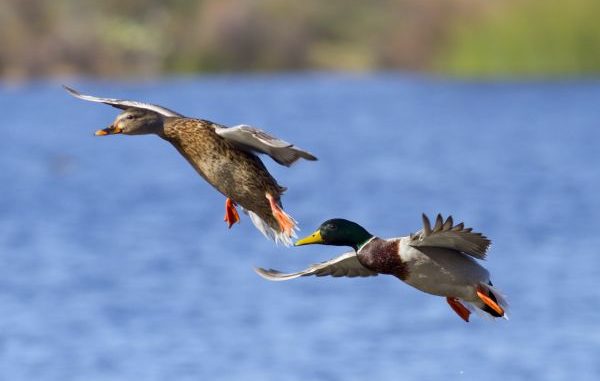
But continued wetland losses in the Prairie Pothole Region remain a concern, DU says
A loss of about 107,000 wetland basins in the Prairie Pothole Region over a 12-year period dampened news of an 8 percent increase in breeding ducks this spring compared to last year, according to reports from Ducks Unlimited.
DU spokesman Eric Keszler said the boost to breeding duck populations now, estimated at 49.2 million birds in the 2014 Waterfowl Survey, is driven by exceptional water conditions again this year.
“The main reason duck numbers are so high currently is because of the abundant precipitation we’ve gotten across the breeding areas in the northern United States and Canada,” Keszler said. “If it rains that much and we continue to get abundant rain, duck populations tend to do pretty well.
“What we’re really concerned about is if we go into a drought situation or a situation where we don’t have as much precipitation. That’s where the habitat loss we’ve been talking about could really impact our waterfowl populations.”
When that wet spring pattern changes up north, Keszler expects to see a corresponding decline in breeding numbers.
“The way things work, we know that’ s going to happen sooner or later. We’re not going to stay in this wet cycle for a long time, so that’s what we’re really concerned about,” he said. “What we predict is that will really show up in duck numbers during a dry year.”
According to a U.S Fish and Wildlife Service study, the loss of those 107,000 wetland basins from 1997 to 2009 could add up to 100,000 duck pairs lacking breeding habitat.
“The wet spring bodes well for duck breeding success this summer and hopefully, for hunting this fall,” said DU’s Scott Yaich. “But we remain concerned with the continuing and escalating loss of nesting habitat in these areas. Because ducks need water, wetlands to hold the water and upland habitats to successfully raise their young, the ongoing loss of grasslands and wetlands across the Prairie Pothole Region will increasingly impact the number of ducks in the fall flight in the long-term.”
Species estimates from this year’s survey are:
Mallards: 10.9 million, which is similar to the 2013 estimate and 42% above the long-term average.
Gadwall: 3.8 million, which is similar to the 2013 estimate and 102% above the long-term average.
American wigeon: 3.1 million, which is 18% above the 2013 estimate and 20% above the long-term average.
Green-winged teal: 3.4 million, which is similar to the 2013 estimate and 69 percent above the long-term average.
Blue-winged teal: 8.5 million, which is similar to the 2013 estimate and 75 percent above the long-term average.
Northern shovelers: 5.3 million, which is similar to the 2013 estimate and 114 percent above the long-term average.
Northern pintails: 3.2 million, which is similar to the 2013 estimate and 20 percent below the long-term average.
Redheads: 1.3 million, which is similar to the 2013 estimate and 85 percent above the long-term average.
Canvasbacks: 0.7 million, which is similar to their 2013 estimates and 18 percent above the long-term average.
Scaup: 4.6 million, which is similar to the 2013 estimate and similar to the long-term average.
For more data and a species-by-species breakdown of the survey, click here.
The spring surveys provide the basis for many management programs, including hunting season dates and bag limits, and the four flyway councils are set to meet later this month to discuss the 2014-15 season structure.


